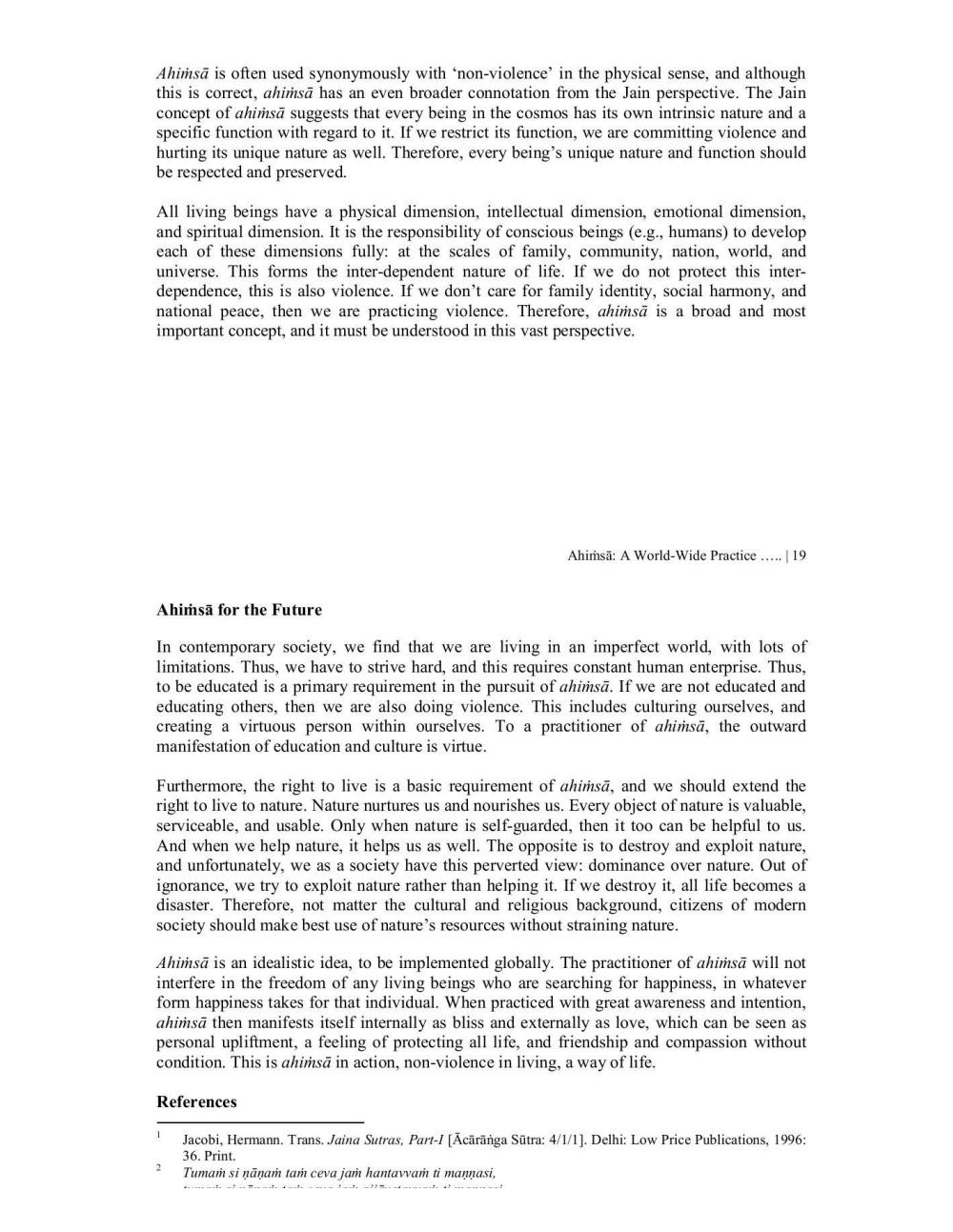________________
Ahimsā is often used synonymously with 'non-violence in the physical sense, and although this is correct, ahirsā has an even broader connotation from the Jain perspective. The Jain concept of ahimsā suggests that every being in the cosmos has its own intrinsic nature and a specific function with regard to it. If we restrict its function, we are committing violence and hurting its unique nature as well. Therefore, every being's unique nature and function should be respected and preserved.
All living beings have a physical dimension, intellectual dimension, emotional dimension, and spiritual dimension. It is the responsibility of conscious beings (e.g., humans) to develop each of these dimensions fully at the scales of family, community, nation, world, and universe. This forms the inter-dependent nature of life. If we do not protect this interdependence, this is also violence. If we don't care for family identity, social harmony, and national peace, then we are practicing violence. Therefore, ahimsā is a broad and most important concept, and it must be understood in this vast perspective.
Ahimsā: A World-Wide Practice ..... 19
Ahimsā for the Future
In contemporary society, we find that we are living in an imperfect world, with lots of limitations. Thus, we have to strive hard, and this requires constant human enterprise. Thus, to be educated is a primary requirement in the pursuit of ahinsā. If we are not educated and educating others, then we are also doing violence. This includes culturing ourselves, and creating a virtuous person within ourselves. To a practitioner of ahimsā, the outward manifestation of education and culture is virtue.
Furthermore, the right to live is a basic requirement of ahirnsä, and we should extend the right to live to nature. Nature nurtures us and nourishes us. Every object of nature is valuable, serviceable, and usable. Only when nature is self-guarded, then it too can be helpful to us. And when we help nature, it helps us as well. The opposite is to destroy and exploit nature, and unfortunately, we as a society have this perverted view: dominance over nature. Out of ignorance, we try to exploit nature rather than helping it. If we destroy it, all life becomes a disaster. Therefore, not matter the cultural and religious background, citizens of modern society should make best use of nature's resources without straining nature.
Ahimsā is an idealistic idea, to be implemented globally. The practitioner of ahimsā will not interfere in the freedom of any living beings who are searching for happiness, in whatever form happiness takes for that individual. When practiced with great awareness and intention, ahirsā then manifests itself internally as bliss and externally as love, which can be seen as personal upliftment, a feeling of protecting all life, and friendship and compassion without condition. This is ahimsā in action, non-violence in living, a way of life.
References
Jacobi, Hermann. Trans. Jaina Sutras, Part-1 [Ācārānga Sutra: 4/1/1]. Delhi: Low Price Publications, 1996: 36. Print. Tumam si nānam tam ceva jam hantavvam ti mannasi,




